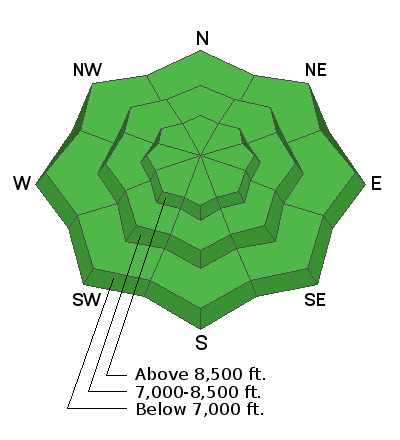The latest blog-casts are out -
Skies are mostly cloudy becoming overcast ahead of the first of two loosely organized storm systems to affect the state through Sunday. Mountain temperatures are in the low 30s; the southeasterlies continue to blow 25-30mph with gusts to 45 but should lose steam as the storm moves overhead. The heat wave dropped snow coverage to just below 100" on many of the mountain snow stakes but we should pick up enough through the weekend the crest the century mark once again.
The idea that the Inuit have many words for snow is generally attributed to the linguist and anthropologist Franz Boas based upon his research on Baffin Island before, and just after, the turn of the century. Examples included aput, expressing snow on the ground; another one, qana, falling snow; a third one, piqsirpoq, drifting snow; and a fourth one, qimuqsuq, referring to a snowdrift proper.* Current snow conditions in english are otherwise unprintable in this polite company. But conditions should improve with a few inches here and there that may add up to a foot through Sunday.
No reports of avalanche activity yesterday.
Breaking News - 8am
A skier was caught and carried 200' and deployed his airbag in a small sluff avalanche in the radical terrain in Taylor Canyon in the Snowbasin backcountry. It was on a northeast aspect at 7400'. He was uninjured.









